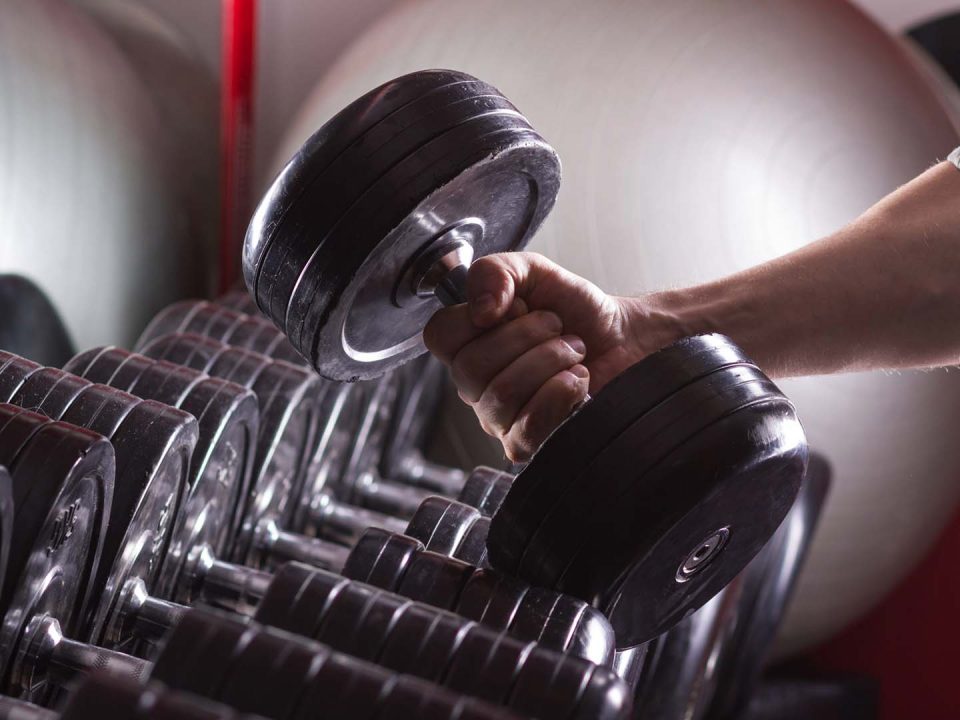Ready to transform your fitness journey? You're not alone - but surprisingly, only 26.9% of women currently engage in regular strength training, according to the National Center for Health Statistics. This means you're about to join an empowering movement that's changing lives.
Forget the myth that lifting weights will make you bulky. Modern research shows that strength training helps women build lean, strong bodies while boosting bone density and mental well-being. The This Girl Can campaign reports that 81% of women who start strength training experience increased confidence - and that's just the beginning.
Whether you're 25 or 65, strength training offers unique benefits for every stage of life. For younger women, it builds a foundation for lifelong fitness. Middle-aged women gain protection against muscle loss and metabolism changes. And for those over 50, research shows significant improvements in bone density and balance.
Your strength journey starts here. With proper guidance and consistent effort, you'll discover what thousands of women already know: strength training isn't just about lifting weights - it's about lifting your entire life to new heights.
The Science Behind Women's Strength Training
Let's dive into how your body responds to strength training. Women build muscle differently than men, and that's perfectly okay! Your body has unique advantages that make strength training incredibly beneficial.
Research from Stronger by Science shows that women often have better muscular endurance than men. This means you can typically do more repetitions with lighter weights and recover faster between sets. Pretty cool, right?
When it comes to bone health, strength training is your secret weapon. A groundbreaking study in PubMed found that women who strength train regularly show significant improvements in bone density, especially in the spine and hips. This becomes crucial after menopause when bone loss typically accelerates.
Your hormones play a key role too. While you have lower testosterone levels than men, don't let this discourage you. Your body compensates with other strengths, like better fatigue resistance during workouts. This means you can maintain proper form longer and get more quality reps in each set.
Here's something exciting: women often show faster strength gains in their lower body compared to men. According to Allen Investments, women can increase their lower body strength by up to 30% in just a few months of consistent training.
Your muscles also recover differently. Studies show that women typically experience less muscle soreness after workouts, allowing for more frequent training sessions. This means you can potentially hit the weights more often than your male counterparts while still recovering properly.
Remember, these biological differences aren't limitations – they're opportunities to train smarter and achieve your unique fitness goals. Your body is built for strength training, and understanding these scientific facts helps you maximize your results.
Key Benefits for Women
Ready to transform your health? Strength training offers incredible rewards that go far beyond building muscle. Let's explore why picking up those weights could be your best wellness decision yet.
Your bones will thank you for strength training. According to PubMed research, women who strength train show significant improvements in bone density, especially in the spine and hip areas. This becomes crucial after 50, when bone loss typically accelerates.
Mental wellness gets a powerful boost too. Studies show that regular strength training reduces anxiety and depression symptoms while improving overall mood. The This Girl Can campaign reports that 81% of women aged 41-60 experienced increased confidence through strength training.
Your metabolism becomes a fat-burning machine with regular strength sessions. Each pound of muscle you build burns extra calories, even when you're resting. According to HealthShots, combining strength training with proper nutrition can boost your resting metabolic rate by up to 15%.
Sleep quality improves significantly with consistent strength training. You'll fall asleep faster and enjoy deeper, more restorative rest. This enhanced sleep cycle helps with recovery and supports your overall fitness goals.
The confidence boost from strength training extends beyond the gym. As you get stronger, daily tasks become easier. Carrying groceries, moving furniture, or playing with kids – everything feels more manageable. This functional strength translates to greater independence and self-reliance in everyday life.
Want to age gracefully? Strength training helps maintain muscle mass, which naturally decreases by 3-8% per decade after age 30. Regular training sessions can slow this decline, keeping you strong and capable as you age.
Essential Exercises for Women
Ready to transform your strength training journey? Let's dive into the most effective exercises that will help you build strength, boost confidence, and achieve your fitness goals.
Compound Movements
Squats and deadlifts are your best friends for full-body strength. According to HealthShots, these exercises activate multiple muscle groups simultaneously, maximizing your workout efficiency. Start with bodyweight squats, then progress to weighted versions as you build confidence.
Upper Body Power
Push-ups and dumbbell rows should be your go-to moves for upper body strength. Can't do a full push-up yet? No problem! Start with wall push-ups or modified versions on your knees. Stronger by Science confirms that women often progress faster in upper body exercises than expected.
Lower Body Focus
Lunges and glute bridges are essential for building lower body strength. Mix up your routine with reverse lunges, walking lunges, and single-leg glute bridges. These exercises not only shape your legs but also strengthen your core and improve balance.
Core Strength
Planks and woodchops target your core from multiple angles. Hold planks for 20-30 seconds and gradually increase duration. Add rotation exercises to build functional strength for everyday activities.
Form First
Perfect form prevents injuries and ensures results. Keep these key points in mind:
- Maintain neutral spine alignment
- Engage your core throughout movements
- Control your breathing
- Start light and master the movement pattern
Remember, consistency beats intensity. Start with 2-3 sets of 8-12 repetitions for each exercise. Listen to your body and progress at your own pace. You've got this! 💪
Want more guidance? Check out Strength Ambassadors for detailed form tutorials and training tips.
Special Considerations for Different Age Groups
Young adults (18-30) have a prime opportunity to build strong foundations. Your body is at its peak for muscle development and recovery during these years. Focus on mastering fundamental movements like squats, deadlifts, and push-ups. According to Stronger by Science, women in this age group can often train 4-5 times per week with proper recovery.
For middle-aged women (31-50), the focus shifts to maintaining muscle mass and preventing age-related bone loss. Research from PubMed shows that consistent strength training helps maintain bone density during these crucial years. Aim for 2-3 full-body workouts weekly, emphasizing compound movements with moderate weights.
Post-menopausal women (50+) need special attention to bone health and balance. A study highlighted by Allen Investments found that regular strength training can reduce the risk of falls by 40%. Start with bodyweight exercises and gradually add resistance. Focus on exercises that improve daily function, like step-ups and chair squats.
Key adaptations for each group:
- Young adults: Challenge yourself with progressive overload
- Middle-aged: Balance intensity with recovery time
- Post-menopausal: Emphasize proper form and joint-friendly movements
Remember to adjust your training based on your fitness level, not just your age. Listen to your body and modify exercises as needed. Start where you are and progress at your own pace.
Common Myths and Facts
Let's bust some persistent myths about women's strength training with solid facts. Many women shy away from weights based on outdated beliefs, but science tells a different story.
The "Bulking Up" Myth
Women won't accidentally bulk up from strength training. According to Stronger by Science, women typically have just 5-10% of the testosterone levels of men, making significant muscle bulk unlikely. Instead, you'll develop lean, defined muscles that boost metabolism and enhance your natural shape.
Weight Training vs. Cardio Reality
Think cardio is the only path to weight loss? Research from HealthShots shows that strength training actually burns calories long after your workout ends. Your body continues burning calories for up to 72 hours while repairing and building muscle tissue.
Recovery Facts
You don't need extra recovery time just because you're a woman. Studies show women often recover faster than men between strength sessions. This means you can safely train major muscle groups 2-3 times per week, adjusting based on your intensity and experience level.
Training Frequency Truth
"Women should only lift light weights" is another myth to dismiss. Allen Investments reports that women can and should challenge themselves with heavier weights for optimal results. Progressive overload is key - gradually increasing weight, reps, or sets as you get stronger.
Remember, strength training is for every woman, regardless of age or fitness level. Start where you are, focus on proper form, and watch your strength soar.
Getting Started Guide
Ready to begin your strength training journey? Let's break down everything you need to get started safely and effectively.
Essential Equipment
Start with these basic items to create your home gym:
- 2-3 sets of dumbbells (light, medium, heavy)
- Resistance bands
- Exercise mat
- Comfortable, supportive shoes
According to Stronger by Science, beginners can achieve significant results with minimal equipment. If you're joining a gym, familiarize yourself with the basic machines and free weights section.
Beginner-Friendly Routine
Start with this simple 3-day weekly routine:
Day 1: Lower Body
- Bodyweight squats: 3 sets of 10
- Glute bridges: 3 sets of 12
- Dumbbell lunges: 2 sets of 10 per leg
Day 2: Upper Body
- Modified push-ups: 3 sets of 8
- Dumbbell rows: 3 sets of 12
- Shoulder press: 2 sets of 10
Day 3: Full Body
- Deadlifts with dumbbells: 3 sets of 10
- Wall planks: 3 sets of 20 seconds
- Band pulls: 3 sets of 15
HealthShots recommends resting 1-2 minutes between sets and focusing on form over weight.
Safety First
Follow these essential guidelines:
- Warm up for 5-10 minutes
- Start with lighter weights
- Master proper form before increasing weight
- Breathe steadily throughout exercises
- Stop if you feel sharp pain
Track Your Progress
Keep a simple training log recording:
- Exercises performed
- Weight used
- Sets and reps completed
- How you felt during workout
Research from Strength Ambassadors shows that tracking progress increases long-term adherence to strength training by 42%.
Remember, consistency beats perfection. Start slowly, focus on form, and gradually increase intensity as you build confidence and strength.
Sources and Further Reading
Ready to dive deeper into strength training? These trusted resources will help expand your knowledge and boost your confidence. Each source offers unique insights backed by scientific research and expert knowledge.
Strength Ambassadors provides eye-opening statistics about women's fitness, including the powerful impact of strength training on confidence levels. Their research shows that 81% of women report increased confidence after starting a strength training program.
For those interested in the science behind bone health, this landmark PubMed study demonstrates how high-intensity strength training preserves bone density in postmenopausal women. The research presents clear evidence of improvements in both muscle mass and balance.
Looking for effective exercises? HealthShots offers a comprehensive guide to strength training movements that maximize fat loss while building lean muscle. Their expert-approved workout plans suit all fitness levels.
Stronger by Science breaks down the science of strength training specifically for women. Their evidence-based approach helps you understand how your body responds to resistance training.
For motivation and real-world success stories, check out the Allen Investments Wellness Report. They showcase how strength training transforms lives through improved physical and mental well-being.
These resources offer everything you need to start or advance your strength training journey. Remember, knowledge is power – especially when it comes to building strength!
Conclusion
Ready to transform your life through strength training? The evidence is clear - strength training offers incredible benefits for women of all ages. From boosting bone density to enhancing mental well-being, the rewards extend far beyond just building muscle.
Remember, only 26.9% of women currently engage in regular strength training, according to the National Center for Health Statistics. You have the opportunity to join this empowered group and experience the transformative effects firsthand. Research from PubMed confirms that consistent strength training can significantly improve bone density, muscle mass, and overall functional fitness.
Start your journey today with these simple steps:
- Begin with bodyweight exercises to master proper form
- Find a qualified trainer or join a strength training community
- Set realistic goals and track your progress
- Focus on consistency rather than perfection
Want to learn more? Check out reputable fitness organizations or connect with certified strength training professionals in your area. Your stronger, more confident self is waiting - take that first step today.
Remember, strength training isn't just about lifting weights - it's about lifting your spirit, your confidence, and your overall quality of life. Join the movement and discover what your body is truly capable of achieving.






